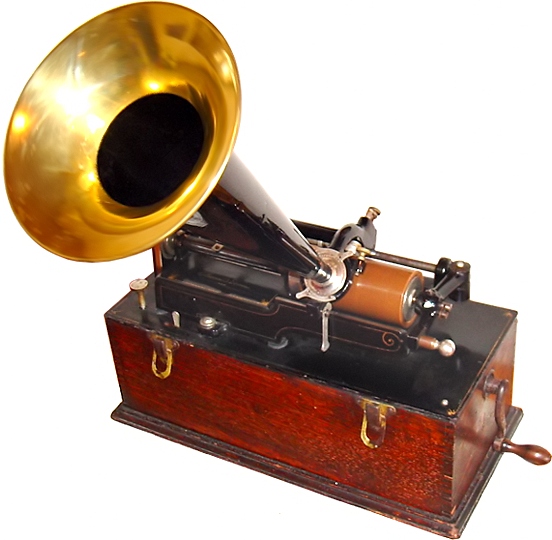Thanks for stopping by and reading this blog. Well a little about me, I am 17 years old and I find how things function quite fascinating and have a strong appreciation of simple and creative designs. In this day of age of technology where we basically can not live without it, it is easy to overlook how impressive what many devices do for us. I also have a greater appreciation for older technology due to them being constructed with the limitation of that time. How many of these older devices are stepping stones for many devices we know and love today. I have a greater appreciation for older obscure technology that not too many people know about because they tend to be quirky and very interesting which many time are the reasons in which they are obscure

The first item I would introduce would be is the granddaddy of all recordable media, Edison’s cylinder phonograph. This device was birthed in 1887 by... you guessed it Thomas Edison. Although Edison was not the first to create a device that is able to record sound, he sure was the first though to create a device in which was able to reproduce the recordings it made. Edison’s cylinder phonograph worked much like the record players we know and love, but instead of using 12 inch polyvinyl chloride disc with grooves, it uses… you guessed it wax cylinders which tended to be made from ceresin, beeswax, and stearic wax, earlier versions were made from tin foil. The device recorded with a special record head that is connected to a diagram which would engrave and create grooves on the cylinder, which would be placed sideways with the needle running from one end to the other, once sound travels into the funnel and makes the diagram vibrate. To hear the recording works the same way just crank the phonograph, replace the head and sound should be produced by the needle running across the grooves vibrating the diagram. Not as simple as the recording devices we have now (aka our phones), but this was revolutionary due to the fact that there was nothing like it before in which one can record and hear an exact recording all in the same device. It was mostly used as a dictation device, but it could, also play music as well. The cylinder phonograph would later be replaced by other devices like the vinyl record, but it still remains as an important part of audio history.
⬇Video below is one of the earliest know cylinder recordings⬇
Interesting fact: The cylinder phonograph was also used in toys, especially dolls to make them talk
Source: https://en.wikipedia.org/wiki/Phonograph_cylinder
Source: https://en.wikipedia.org/wiki/Phonograph_cylinder
Comments
Post a Comment